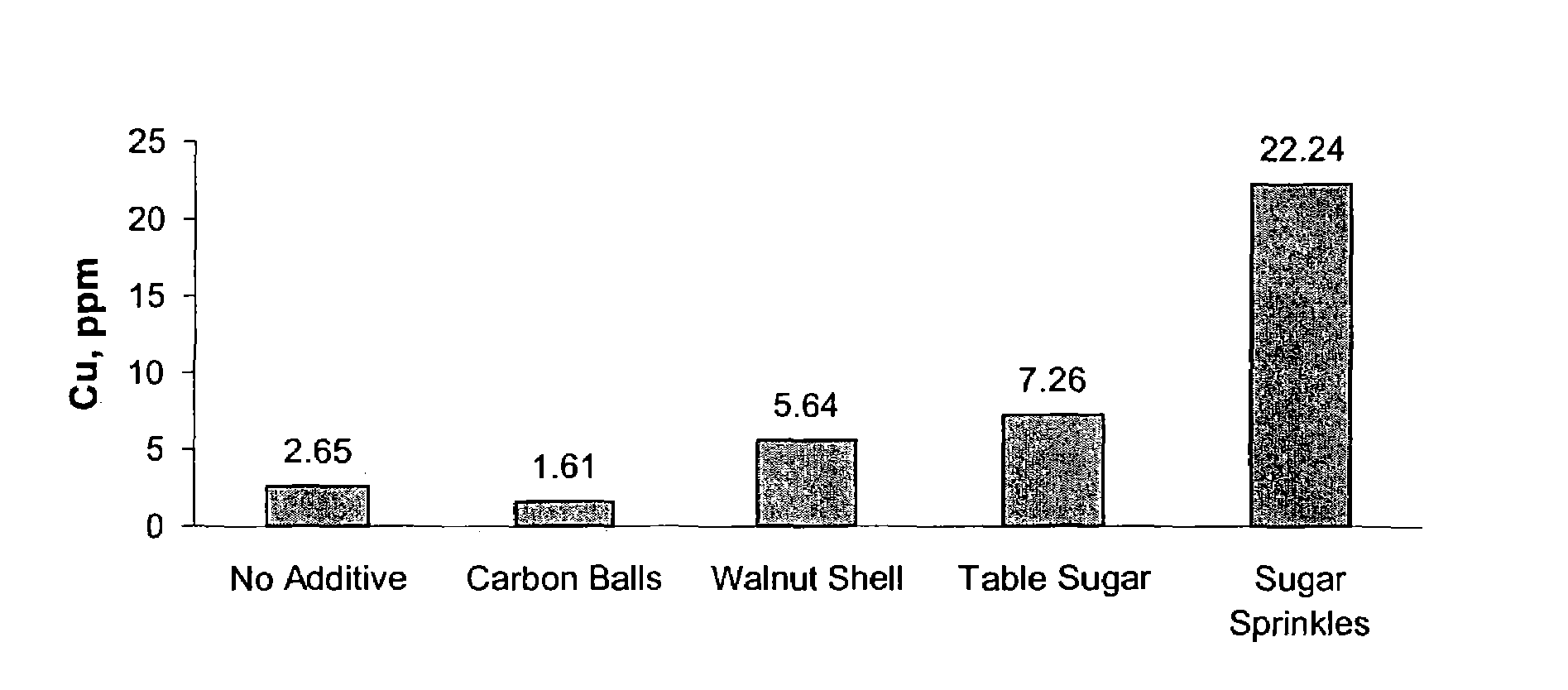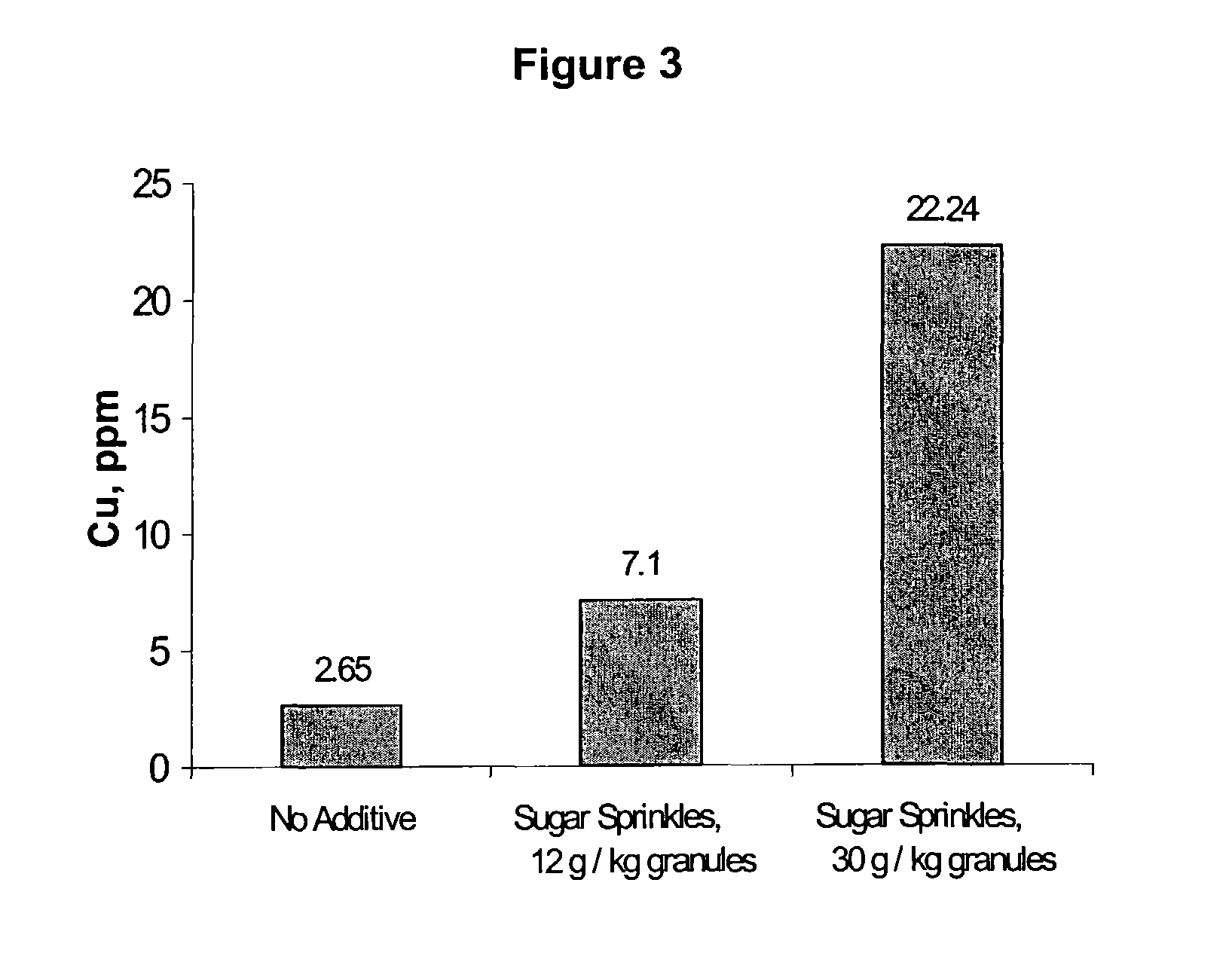Algae resistant roofing granules with controlled algaecide leaching rates, algae resistant shingles, and process for producing same
a technology of algaecide and algaecide, which is applied in the field of algaecide leaching rate control of algaecide, can solve the problems of severe discoloration of the entire roof, and treatment is usually effective, and achieves easy control of algaecide leaching ra
- Summary
- Abstract
- Description
- Claims
- Application Information
AI Technical Summary
Benefits of technology
Problems solved by technology
Method used
Image
Examples
example 1
[0054]1,000 g of crushed and screened rhyolite igneous rock from Wrentham, Mass. having an average particle size of 1 mm are mixed for 2 minutes in a paddle mixer with 40 g of aqueous sodium silicate (40% solids, with Na2O:SiO2 ration of 1:3.2) (Occidental Chemical Corporation, Dallas, Tex.), 30 g of Wilkinson brand kaolin clay, 35 g of Chemet brand cuprous oxide (American Chemet Corporation, Deerfield, Ill.) and 1.75 g of Kadox brand zinc oxide (Zinc Corporation of America, Monaca, Pa.), and 6.5 g of Regal carbon balls supplied by Cabot Corporation (Boston, Mass.) and having a chemical composition of 90% carbon black and an average particle size of 25 nm, to form green granules having a particle size of about 1 mm. The green granules are then fired in a gas-fired kiln at a temperature of 500 degrees C. for 20 minutes to form algae-resistant granules according to the present invention.
example 2
[0055]The process of Example 1 is repeated, except that 30 g of table sugar (Domino) having an average particle size of 20 μm is substituted for the carbon balls.
example 3
[0056]The process of Example 1 is repeated, except that 12 g of candy sugar “sprinkles” (Signature) having an average particle size of 1.2 mm are substituted for the carbon balls.
PUM
| Property | Measurement | Unit |
|---|---|---|
| particle size | aaaaa | aaaaa |
| temperatures | aaaaa | aaaaa |
| pore size | aaaaa | aaaaa |
Abstract
Description
Claims
Application Information
 Login to View More
Login to View More - R&D
- Intellectual Property
- Life Sciences
- Materials
- Tech Scout
- Unparalleled Data Quality
- Higher Quality Content
- 60% Fewer Hallucinations
Browse by: Latest US Patents, China's latest patents, Technical Efficacy Thesaurus, Application Domain, Technology Topic, Popular Technical Reports.
© 2025 PatSnap. All rights reserved.Legal|Privacy policy|Modern Slavery Act Transparency Statement|Sitemap|About US| Contact US: help@patsnap.com



